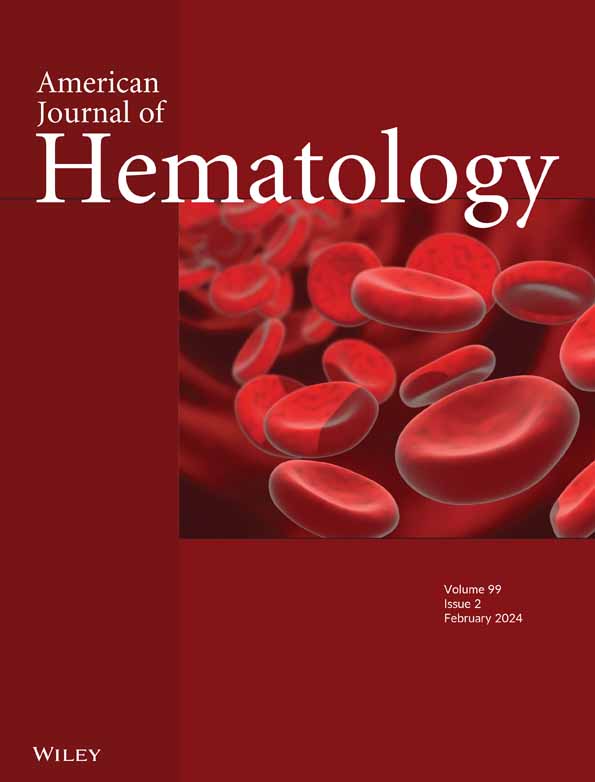欧洲骨髓瘤网络关于功能性高风险多发性骨髓瘤的共识声明。
IF 9.9
1区 医学
Q1 HEMATOLOGY
引用次数: 0
摘要
多发性骨髓瘤(MM)是一种无法治愈的血癌,其特征是克隆性骨髓浆细胞增多症、高钙血症、肾功能衰竭、贫血和溶骨性骨病。约20%的NDMM患者在诊断时未被预测为高风险疾病,尽管有最佳诱导+/- ASCT和来那度胺维持,但进展早期,随后被归类为功能性高风险(FHR)疾病。标准化的风险分层模型将肿瘤负荷的生物标志物、高危细胞遗传学的存在、是否存在浆细胞白血病/髓外疾病作为诊断时的高危因素;然而,对新型药物诱导(NA-IND)的反应深度/持续时间作为疾病风险的动态标志物尚未得到定义。然而,无论诊断风险分层如何,对NA-IND的反应可能是识别FHR生物学预示总生存期(OS)短得不可接受的患者的唯一最有效的方法。在这份EMN共识声明中,我们将FHR-MM定义为在没有高风险细胞遗传学的情况下,在一线治疗开始后18个月内疾病进展,讨论了潜在的疾病生物学,以及改善这些患者预后的策略。本文章由计算机程序翻译,如有差异,请以英文原文为准。
European Myeloma Network Consensus Statement on Functional High-Risk Multiple Myeloma.
Multiple myeloma (MM) is an incurable blood cancer characterized by clonal bone marrow plasmacytosis, hypercalcemia, renal failure, anemia, and osteolytic bone disease. Approximately 20% of NDMM patients, not predicted to have high-risk disease at diagnosis, progress early, despite optimal induction +/- ASCT and lenalidomide maintenance, and are subsequently categorized as functional high-risk (FHR) disease. Standardized risk-stratification models incorporate biomarkers of tumor burden, existence of high-risk cytogenetics, with the presence/absence of plasma cell leukemia/extramedullary disease to attribute high-risk at diagnosis; however, depth/duration of response to novel agent-based induction (NA-IND) as dynamic markers of disease risk have not been defined. However, irrespective of diagnostic risk-stratification, response to NA-IND may be the single most effective method of identifying patients whose FHR biology portends an unacceptably short overall survival (OS). In this EMN consensus statement, we define FHR-MM as disease progression within 18 months of commencement of first-line therapy in the absence of high-risk cytogenetics, discuss the underlying disease biology, and strategies to improve outcomes for these patients.
求助全文
通过发布文献求助,成功后即可免费获取论文全文。
去求助
来源期刊
CiteScore
15.70
自引率
3.90%
发文量
363
审稿时长
3-6 weeks
期刊介绍:
The American Journal of Hematology offers extensive coverage of experimental and clinical aspects of blood diseases in humans and animal models. The journal publishes original contributions in both non-malignant and malignant hematological diseases, encompassing clinical and basic studies in areas such as hemostasis, thrombosis, immunology, blood banking, and stem cell biology. Clinical translational reports highlighting innovative therapeutic approaches for the diagnosis and treatment of hematological diseases are actively encouraged.The American Journal of Hematology features regular original laboratory and clinical research articles, brief research reports, critical reviews, images in hematology, as well as letters and correspondence.

 求助内容:
求助内容: 应助结果提醒方式:
应助结果提醒方式:


